Did you know they grow tea in Bhutan?
Well, until a few months ago, neither did I.
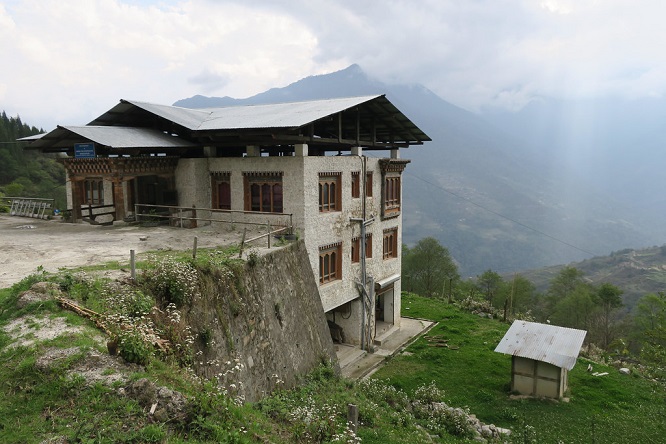
Long time readers of this blog (all three of you) will remember that my original mission statement was to track down strange new teas from off-the-beaten-path growing regions. In the subsequent decade or so, I’ve done a fair bit of cataloguing. The country of Bhutan was never on my radar, mainly for how northern and remote it was. I knew it was a heicha drinking country, but that’s all I knew.
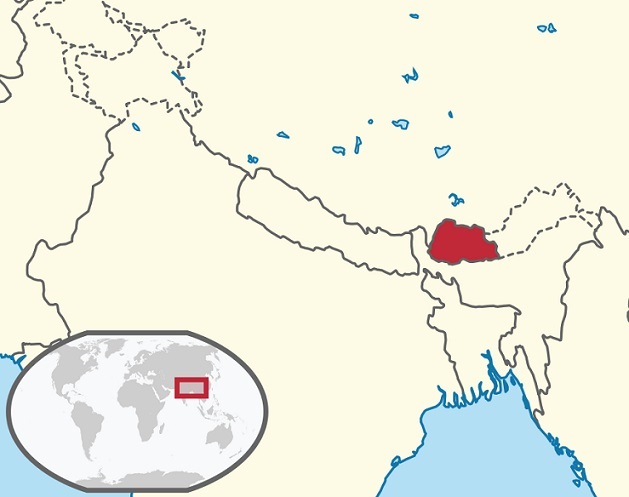
Bhutan is a landlocked kingdom that borders several states in India, and even parts of Tibet. All the points in India it borders just so happen to be tea producing states. Sikkim, West Bengal, Assam, Arunachal Pradesh; I’ve tried teas from all of these. So, it goes without saying that tea could be grown in Bhutan, too.
How did that happen? Well . . .
The project has an interesting history. In the 1950s, Darjeeling tea seeds were gifted to the then-king of Bhutan, and they were planted at his winter abode—Thruepang Palace.
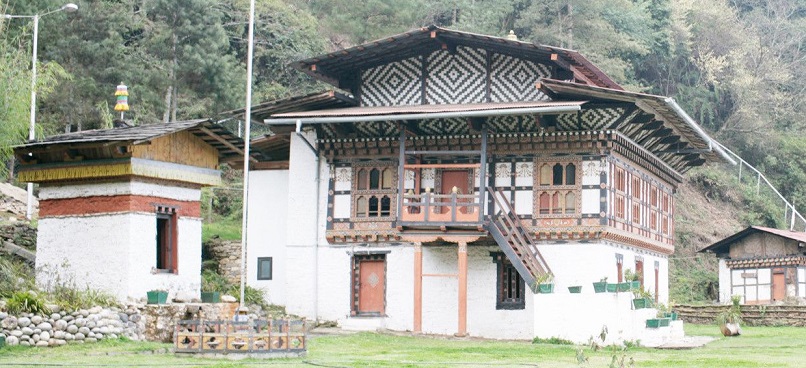
There, they grew into shrubs and trees, but served no other purpose than ornamentation. Fast-forward to the 1990s, a younger Sebastian Beckwith—a few years shy of starting the tea outfit, In Pursuit of Tea—went on a hunt for these rumored tea bushes. He found them, and afterwards, made connections with varied individuals in the Bhutanese government. Those connections turned into a project to revitalize the former serf region of Samcholing. Tea seeds from Thruepang Palace were brought to Samcholing, and the first plot was planted. Since then, it grew to 42 acres. Along with that, came the construction of a tiny tea factory for processing the tea, and by 2016, they were producing green tea.
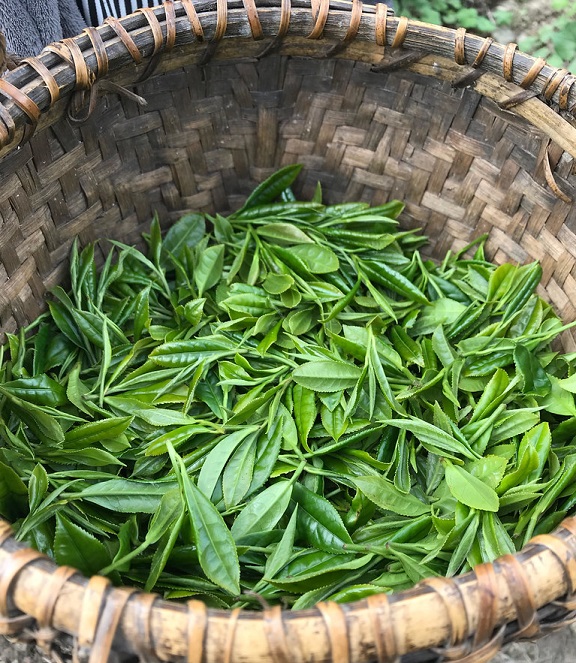
In 2019, Sebastian was brought back in, along with Bachan Gyawali (from the Nepalese tea garden, Jun Chiya Bari), and Kevin Gascoyne of Camellia Sinensis. Now that the plants were beyond mature enough to cultivate, and an all-woman cooperative had been established, the next bit to tackle was improving upon production quality. I’m not sure how or why green tea was decided upon as the first beta test, but I suspect it had something to do with the sheer dearth of green tea in Bhutan as a whole. The country mainly consumes yak butter tea, heicha, and black tea from other Himalayan regions. That said, green tea is tough to master, even in more established regions. Darjeeling and Assam—save for a few garden exceptions—still haven’t a grasp on it.
That unfortunate bias aside, I still wanted to try it for myself. While In Pursuit of Tea had exclusive U.S. rights to the green tea, Camellia Sinensis began carrying some as of 2019 . . . but it sold pretty quickly. I hoped to get my hands on some once the 2020 harvest went live. My finger on the proverbial buzzer, I contacted Kevin Gascoyne to see if I could procure a sample for palatial perusal. To my kinda-surprise, he obliged!
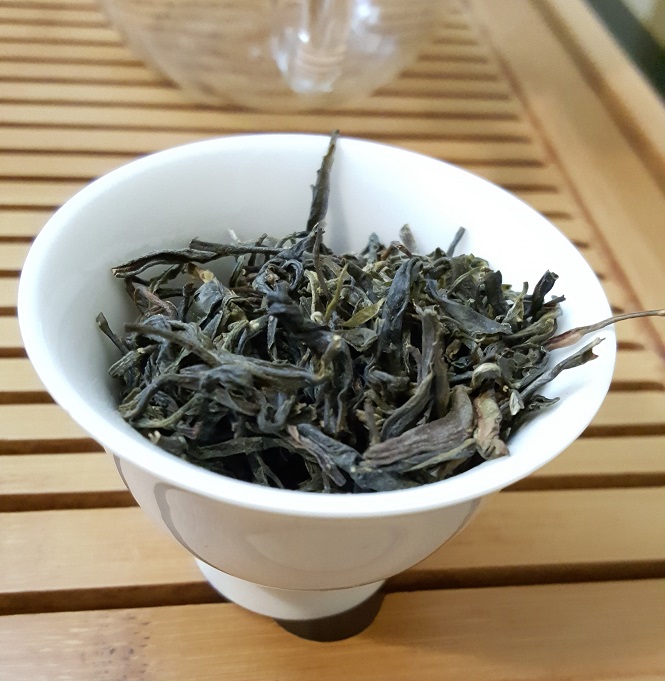
Camellia Sinensis mentioned the “rusticity” of this green tea, and they weren’t kidding. The leaves were as rough-hewn as any green tea I’d ever seen. Or any sheng puerh, for that matter. In fact, the aroma this gave off had a very sheng vibe to it, with emphasis on the cantaloupe/grape lean. That compounded with a pronounced earthiness. What kept it’s maocha lean in check, though, was a more “leafy” bend on later sniffs. This was still a green tea through-and-through, but one could tell some oxidation snuck through in the processing. Which was fine by me; I dig the occasional oxidized, steamed green. Jie Cha (from China) and Bihakko Cha (Japan) come to mind.
Brewing recommendations called for water heated to 185F, and a steep time of three minutes; one-and-a-half teaspoons of leaf. I didn’t deviate too much from that. Actually, not at all, which was a shocker for me. Although, from the earlier brew up, I knew I could have without much palatial penalty.
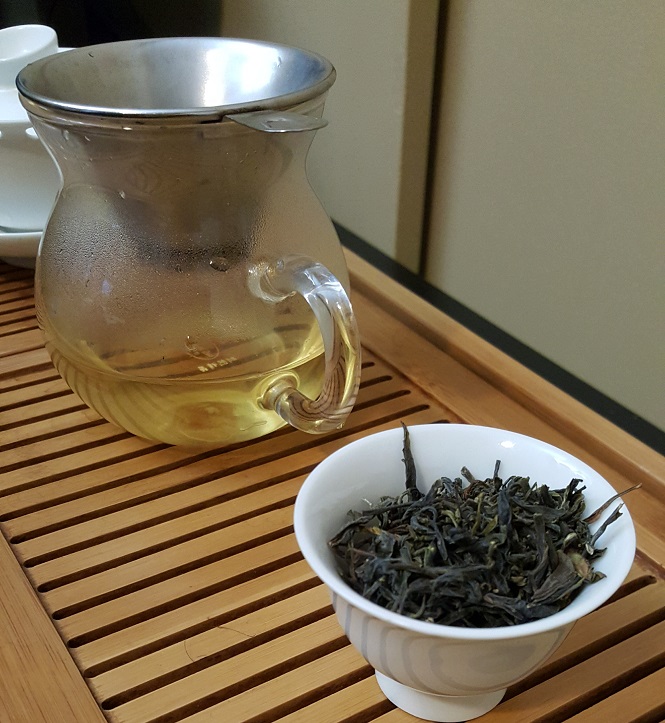
The liquor brewed a very bold gold color (rhyme intended), with a steam that felt like it was scented with grape leaf. Not that I’d know what that smelled like, but I’d assume it was like the steam coming off this sucker. The forefront, on first sip, started off with a slight vegetal tickle, and—not gonna lie—I grew concerned. However, that smoothed out to something more . . . well . . . green. The roughness to the start complimented the earthier aspects of the top note, and the more traditionally stone fruity trail-off.
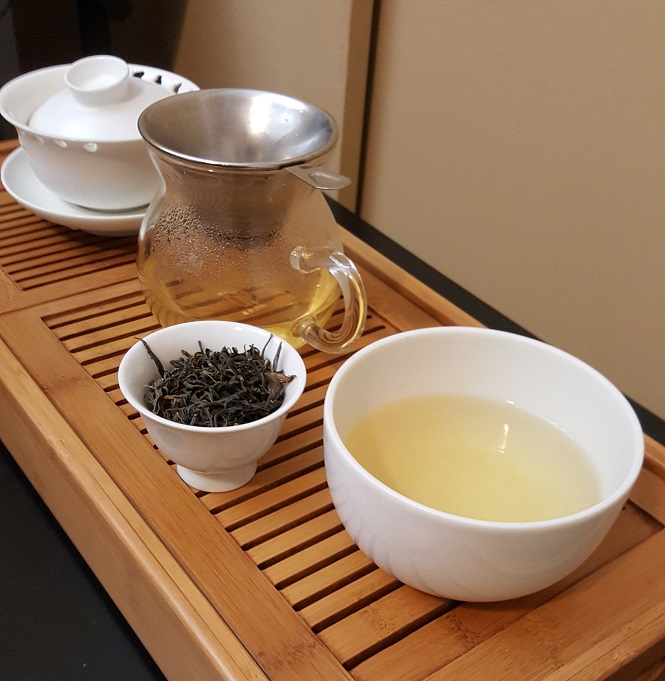
Is it perfect? No. Some oxidation is still present in the final product. Of course, the rougher side of my palate views this as a benefit. It means that—like the other oxidized greens I mentioned—it could put up with a bit of brew-abuse. Not that I’d want to; it’s just reassuring to know that it can. The flavor profile, the full-bodied taste, the relatively pleasant mouthfeel, and the rustic fruit notes prove that they’re very much on the right track.
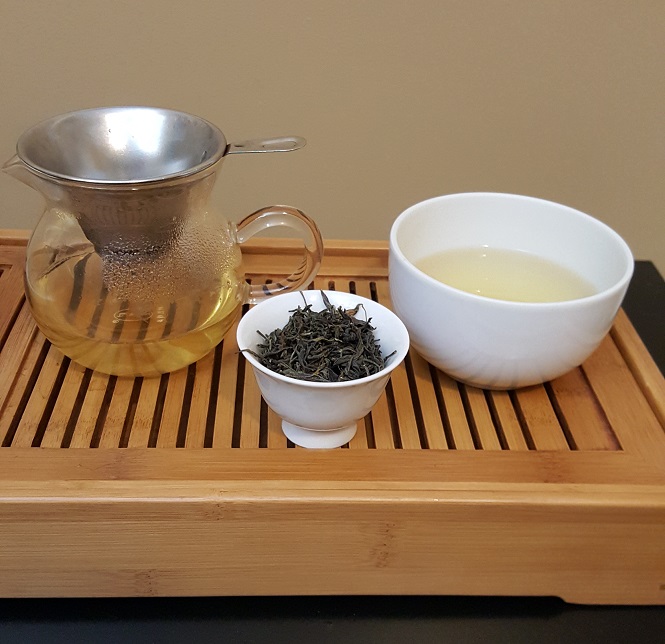
I would normally post a link to the product after my narrative ramblings, alas, Camellia Sinensis sold out of it long before I got to this write-up. Of course, they did. No surprise there. It is available at In Pursuit of Tea. (At the time of this writing.)
For Camellia Sinensis’s write-up on this tea, go HERE.
Leave a Reply